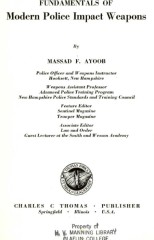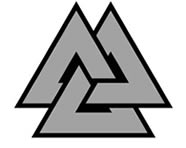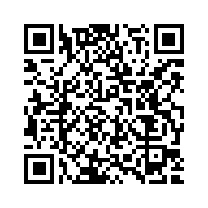
Author : Ayoob Massad F.
Title : Fundamentals of modern police impact weapons
Year : 1978
Link download : Ayoob_Massad_F_-_Fundamentals_of_modern_police_impact_weapons.zip
Foreword. The history of man is a story of his weapons. Physically shortchanged by nature, his early existence must have been a nightmare of hairbreadth escapes. ·weak; slow; with inferior eyes, ears, and sense of smell; a thin, tender skin; and without fangs, talons or horns-his only defense was to climb, hide in caves, or ring himself with fire. Lacking even the reproductive capacity of the other animals which served as prey, that he survived as a species is one of the great wonders of our world. Not only did he survive, he developed weapons allowing him to avoid close physical contact in an encounter and became the most fearsome predator of them all. The original weapons he learned to use, both of which would be classified as "impact" types, were the rock and the stick. The earliest written account seems to favor tbe rock, the weapon with which Cain allegedly did a number on Abel, as the earliest weapon. However, since tbe report on this homicide gives very few details, I would like to hear both sides of the argument before conceding precedence. There is a good chance that Cain took a bum rap. Knowing brothers, I suspect that Abel drew a stick on him and that he threw the rock in self-defense. If that was the case, the murder stigma could have easily become known as the "brand of Abel." A rock is a one-shot weapon, and if Cain had missed, it would have left him disarmed to face retribution from an outraged brother. The stick was the crude progenitor of all the other weapons. From it evolved the club, the sword, the spear, the arrow, and finally, the bullet, each adding to the abi lity to kill at greater distance, thus minimizing danger to the user. It also was responsible for the development of shielding armor as a defense against the capabilities of such weapons. Although considered in itself a primitive weapon-brought to greatest perfection by peasants forbidden more lethal devices (as exemplified by the Oriental adaptation of various types of grain flails and the British quarter stave)-the stick, as well as various types of body armor has become increasingly useful in modern police arsenals. My own law enforcement experience was gained on duty with the United States Border Patrol, a duty in which there was very little call for use of an impact weapon other than a gun. Consequently, for years I thought of a stick as something to pick up and hit someone with if nothing· more satisfactory was available. This judgment was permanently changed one night in a New Orleans waterfront bar where I first saw a stick used by an expert. A Military Police sergeant called by the management to take care of a soldier customer who had become overly bellicose walked up to the subject, placed his left hand on the offender's shoulder in a comradely manner, quickly thrust his baton between the legs from behind, turned it so that he was holding it knuckles up crossways in front of the legs, lifted so that the drunk's feet were barely touching the floor, and walked him " tippy-toed" to the waiting paddy wagon. It was obvious to me (and to the subject) that if the sergeant had turned his shoulder loose, the subject would have been dumped on his head. The "knuckles up" hold on the baton also got his attention. My interest aroused, I read the only books available at that time on the subject. These were Get Tough by W. E. Fairbairn, Kill or Get Killed by Rex Applegate, and Cold Steel by John Styers. All gave excellent accounts of how to kill somebody with a stick, which is fine for the military situation in effect at the time but a mite drastic for use on the neighborhood gentry. Fundamentals of Modern Impact Weapons gives exactly the same information, broadened and amplified, in a format more applicable for modern usage, by telling you how to use the various impact weapons without killing the subject of your attention. This is a commendable change if for no other reason than the possibility that, having been shown the error of his ways without making the lesson permanent, the erstwhile thug might decide to settle down and become a valuable taxpayer. I am not familiar with the other titles mentioned by the author on page 4 of this book. With the exception of the ones listed above and various military manuals dealing with the use of the baton, I was not aware of the existence of other writings of value on this subject during my enforcement years. This is regrettable, as was forcibly brought to the attention of a group of border patrolmen assigned to a southern university campus undergoing a state of considerable turmoil several years ago. These men were all skilled marksmen. Given batons and armbands temporarily proclaiming them to be U.S. deputy marshals, they took quite a beating because they did not know the technique of the stick and could not ethically defend themselves with the firearms with which they were familiar. Ayoob has done a superb job of describing offensive and defensive use of impact weapons. In addition to saps, night sticks, batons, and other conventional weapons, he has given excellent coverage of the "makeshift" items which can be used in an emergency. These include handcuffs, key rings, belts, flashlights, guns, beer mugs, and just about any other item which might likely be in reach, not nailed down, and of sufficient substance to give weight to your side of an argument. Nor has he neglected the legal and ethical considerations attendant to the use of "sufficient" force. Massad Ayoob is a prolific writer. He is now serving on the staff of a number of "gun" publications and free-lancing for the others. I am confident that this, his first book, will assuredly be followed by others. Whether you are in law enforcement work-in which case Fundamentals of Modern Police Impact Weapons is a mustor you are not, but have decided that you are going to collect Ayoob for your library, I can hardly think of a better place to start collecting than with Number One. BILL JORDAN. ...

Demolins Edmond - L'éducation nouvelle
Auteur : Demolins Edmond Ouvrage : L'éducation nouvelle Année : 1898 Lien de téléchargement :...














